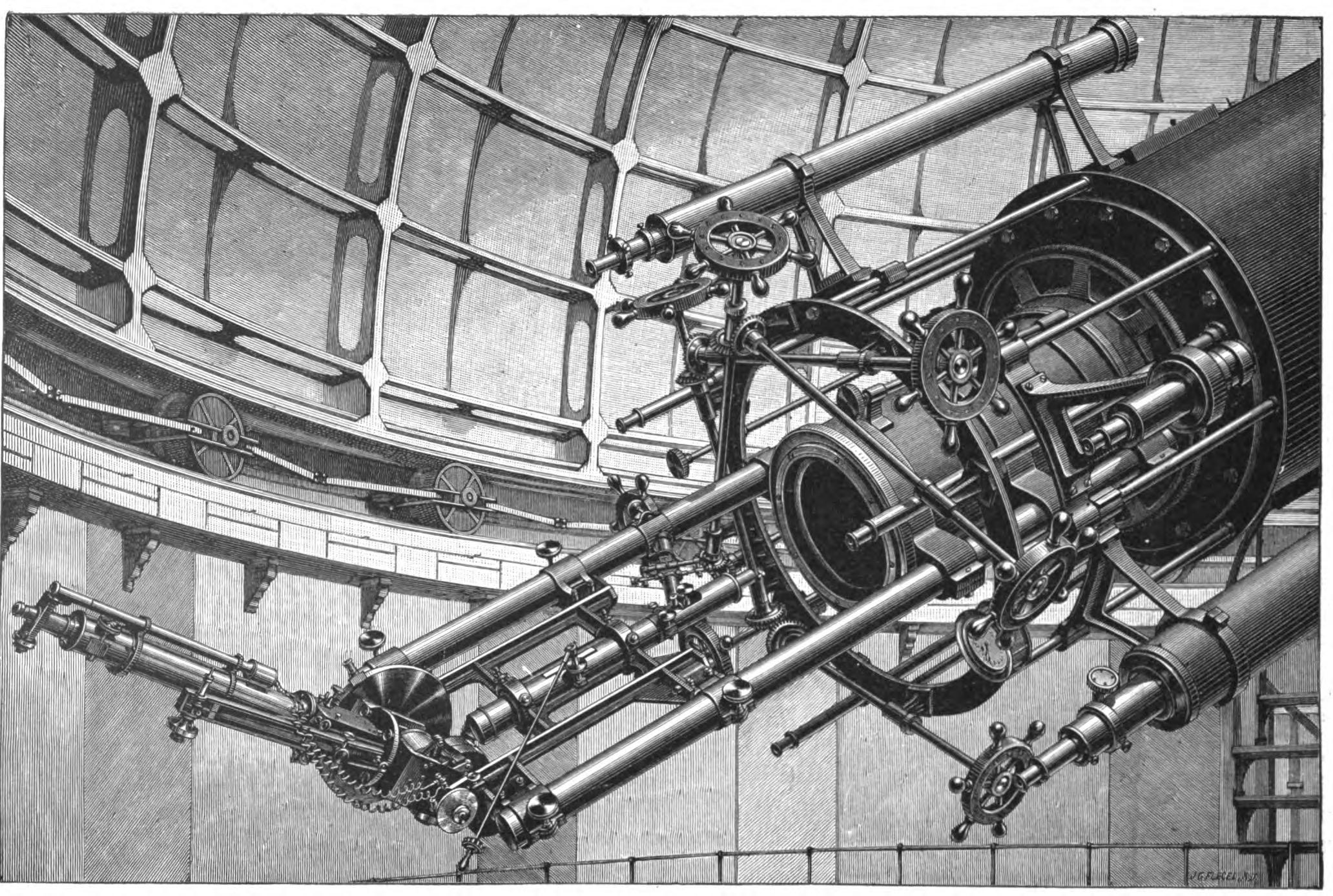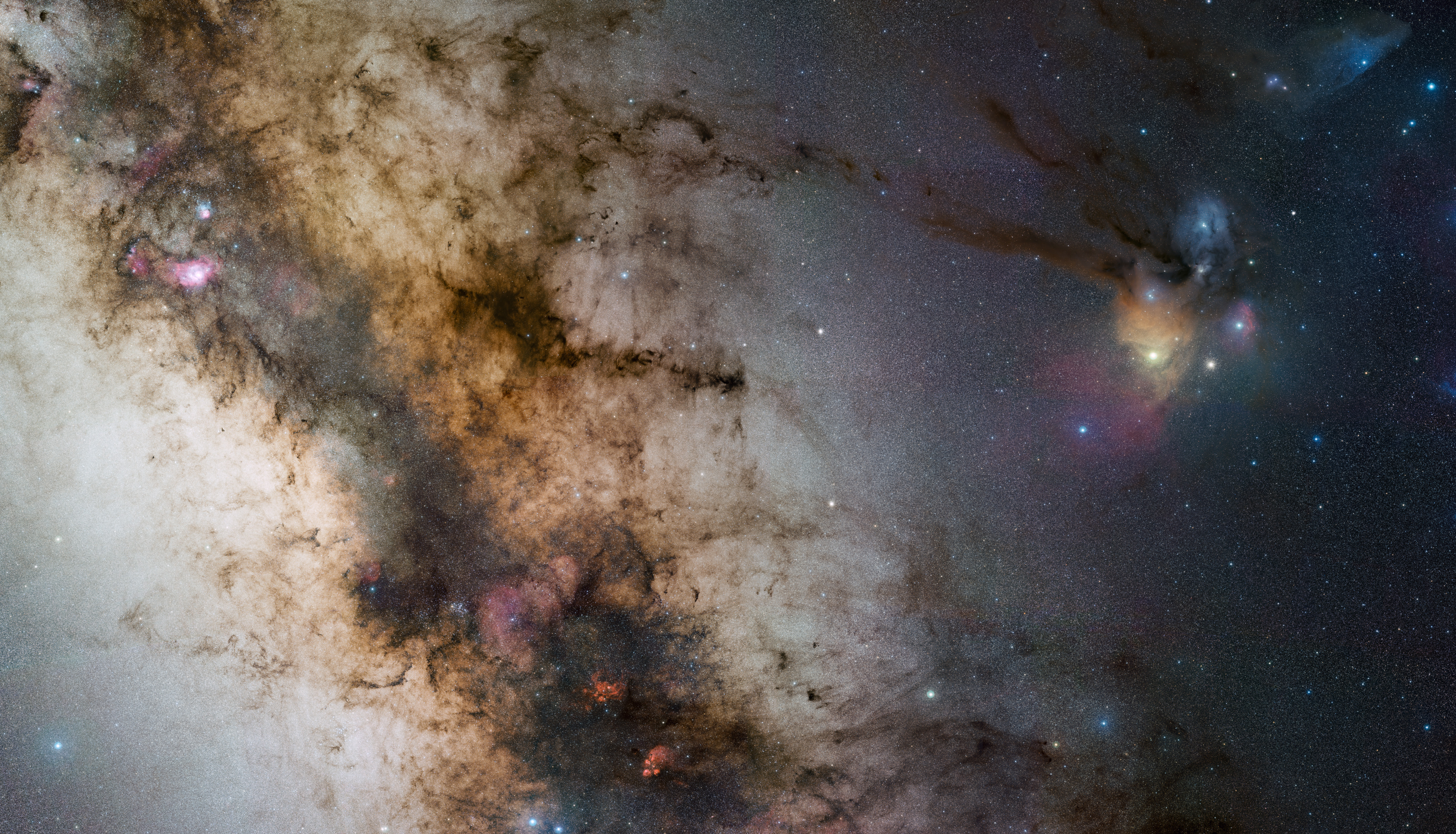|
V2052 Ophiuchi
V2052 Ophiuchi, also known as HR 6684, is a star about 920 light years from Earth in the constellation Ophiuchus. It is a 5th-magnitude star, making it faintly visible to the naked eye of an observer far from city lights. V2052 Ophiuchi is a Beta Cephei variable (β Cep) star, varying slightly in brightness from magnitude 5.81 to 5.84 over a period of about 3.4 hours. In 1972, Mikolaj Jerzykiewicz announced that HR 6684 is a variable star, based on his observations using the 0.6 meter Air Force Telescope on Mauna Kea. He classified the star as a β Cep variable with period of 0.13989 days, He further noted that if confirmed, it would be the least luminous and shortest period β Cep star known up to that date. Spectroscopic and photometric observations by D. Harold McNamara and Bruce Bills in 1973 confirmed Jerzykiewicz's results. In 1973, HR 6684 was given the variable star designation V2052 Ophiuchi. In 1994, Henryk Cugier ''et al.'' determined that V2052 Ophiuchi pulsa ... [...More Info...] [...Related Items...] OR: [Wikipedia] [Google] [Baidu] |
V2052OphLightCurve
V, or v, is the twenty-second letter of the Latin alphabet, used in the modern English alphabet, the alphabets of other western European languages and others worldwide. Its name in English is ''vee'' (pronounced ), plural ''vees''. Name * (); in dialects that lack contrast between and , the letter is called , "low B/V". * * * * or *Japanese: is called a variety of names originating in English, most commonly or , but less nativized variants, violating to an extent the phonotactics of Japanese, of ー , or , and are also used. The phoneme in Japanese is used properly only in loanwords, where the preference for either or depends on many factors; in general, words that are perceived to be in common use tend toward . * * * is recommended, but is traditional. If is referred to as the latter, it would have the same pronunciation as the letter in Spanish (i.e. after pause or nasal sound, otherwise ); thus further terms are needed to distinguish from . In ... [...More Info...] [...Related Items...] OR: [Wikipedia] [Google] [Baidu] |
Astronomical Spectroscopy
Astronomical spectroscopy is the study of astronomy using the techniques of spectroscopy to measure the electromagnetic spectrum, spectrum of electromagnetic radiation, including Visible light astronomy, visible light, Ultraviolet astronomy, ultraviolet, X-ray astronomy, X-ray, Infrared astronomy, infrared and Radio astronomy, radio waves that radiant energy, radiate from stars and other celestial objects. A stellar spectrum can reveal many properties of stars, such as their chemical composition, temperature, density, mass, distance and luminosity. Spectroscopy can show the velocity of motion towards or away from the observer by measuring the Doppler effect, Doppler shift. Spectroscopy is also used to study the physical properties of many other types of celestial objects such as planets, nebulae, Galaxy, galaxies, and Active galactic nucleus, active galactic nuclei. Background Astronomical spectroscopy is used to measure three major bands of radiation in the electromagnetic spe ... [...More Info...] [...Related Items...] OR: [Wikipedia] [Google] [Baidu] |
Bright Star Catalogue Objects
Bright may refer to: Common meanings *Bright, an adjective meaning giving off or reflecting illumination; see Brightness *Bright, an adjective meaning someone with intelligence People * Bright (surname) * Bright (given name) *Bright, the stage name of Thai actor, musician, model, host and entrepreneur Vachirawit Chivaaree Places Australia * Bright, Victoria, a town * Electoral district of Bright in South Australia Canada * Bright Parish, New Brunswick Northern Ireland * Bright, County Down, a village and parish in County Down United States * Bright, Indiana, a census-designated place * Bright, West Virginia, an unincorporated community * Bright, Wisconsin, an unincorporated community Arts and entertainment Music * Bright (American band), an experimental pop group from Brooklyn, New York ** ''Bright'' (Bright (American band) album), 1996 album * Bright (Japanese band), a dance vocal band from Japan ** ''Bright'' (Bright (Japanese band) album), 2012 album * "Bright" (song), ... [...More Info...] [...Related Items...] OR: [Wikipedia] [Google] [Baidu] |
Objects With Variable Star Designations
Object may refer to: General meanings * Object (philosophy), a thing, being, or concept ** Object (abstract), an object which does not exist at any particular time or place ** Physical object, an identifiable collection of matter * Goal, an aim, target, or objective * Object (grammar), a sentence element, such as a direct object or an indirect object Science, technology, and mathematics Computing * 3D model, a representation of a physical object * Object (computer science), a language mechanism for binding data with methods that operate on that data ** Object-orientation (other), in which concepts are represented as objects *** Object-oriented programming (OOP), in which an object is an instance of a class or array ** Object (IBM i), the fundamental unit of data storage in the IBM i operating system * Object file, the output of a compiler or other translator program (also known as "object code") * HTML object element Mathematics * Object (mathematics), an abst ... [...More Info...] [...Related Items...] OR: [Wikipedia] [Google] [Baidu] |
Henry Draper Catalogue Objects
Henry may refer to: People and fictional characters * Henry (given name), including lists of people and fictional characters * Henry (surname) * Henry, a stage name of François-Louis Henry (1786–1855), French baritone Arts and entertainment * Henry (2011 film), ''Henry'' (2011 film), a Canadian short film * Henry (2015 film), ''Henry'' (2015 film), a virtual reality film * ''Henry: Portrait of a Serial Killer'', a 1986 American crime film * Henry (comics), ''Henry'' (comics), an American comic strip created in 1932 by Carl Anderson * "Henry", a song by New Riders of the Purple Sage Places Antarctica * Henry Bay, Wilkes Land Australia *Henry River (New South Wales) *Henry River (Western Australia) Canada * Henry Lake (Vancouver Island), British Columbia * Henry Lake (Halifax County), Nova Scotia * Henry Lake (District of Chester), Nova Scotia New Zealand * Lake Henry (New Zealand) * Henry River (New Zealand) United States * Henry, Illinois * Henry, Indiana * Henry, Nebras ... [...More Info...] [...Related Items...] OR: [Wikipedia] [Google] [Baidu] |
Hipparcos Objects
''Hipparcos'' was a scientific satellite of the European Space Agency (ESA), launched in 1989 and operated until 1993. It was the first space experiment devoted to precision astrometry, the accurate measurement of the positions and distances of celestial objects on the sky. This permitted the first high-precision measurements of the luminosity, intrinsic brightnesses, proper motions, and parallaxes of stars, enabling better calculations of their distance and tangential velocity. When combined with radial velocity measurements from spectroscopy, astrophysicists were able to finally measure all six quantities needed to determine the motion of stars. The resulting ''Hipparcos Catalogue'', a high-precision catalogue of more than 118,200 stars, was published in 1997. The lower-precision ''Tycho Catalogue'' of more than a million stars was published at the same time, while the enhanced Tycho-2 Catalogue of 2.5 million stars was published in 2000. ''Hipparcos'' follow-up mission, ''Gaia ... [...More Info...] [...Related Items...] OR: [Wikipedia] [Google] [Baidu] |
Ophiuchus
Ophiuchus () is a large constellation straddling the celestial equator. Its name comes from the Ancient Greek (), meaning "serpent-bearer", and it is commonly represented as a man grasping a snake. The serpent is represented by the constellation Serpens. Ophiuchus was one of the 48 constellations listed by the 2nd-century astronomer Ptolemy, and it remains one of the IAU designated constellations, 88 modern constellations. An old alternative name for the constellation was Serpentarius. Location Ophiuchus lies between Aquila (constellation), Aquila, Serpens, Scorpius, Sagittarius (constellation), Sagittarius, and Hercules (constellation), Hercules, northwest of the center of the Milky Way. The southern part lies between Scorpius to the west and Sagittarius (constellation), Sagittarius to the east. In the northern hemisphere, it is best visible in summer. It is opposite of Orion (constellation), Orion. Ophiuchus is depicted as a man grasping a Serpens, serpent; the int ... [...More Info...] [...Related Items...] OR: [Wikipedia] [Google] [Baidu] |
Helium-strong Star
Helium-weak stars are chemically peculiar stars which have a weak helium lines for their spectral type. Their helium lines place them in a later (i.e. cooler) spectral type than their hydrogen lines. Helium-weak star Helium-weak stars are mid-to-late B-class stars with weaker than normal spectral lines of neutral helium, compared to normal stars with similar hydrogen line strengths. These are considered to be an extension of the Ap/Bp chemically-peculiar stars with slightly hotter temperatures. They often show similar increased abundances of heavy elements. The mechanism of atmospheric stratification of elements is though to be responsible for both types of chemical peculiarity. This is a non-extensive list of helium-weak stars. Helium-strong star A related class of stars have anomalously strong helium lines in their spectra, and are known as helium-strong stars. These are the more massive stars with classes of B1 to B3, compared to the helium-weak stars with classes of B5 ... [...More Info...] [...Related Items...] OR: [Wikipedia] [Google] [Baidu] |
Chemically Peculiar Star
In astrophysics, chemically peculiar stars (CP stars) are stars with distinctly unusual Metallicity, metal abundances, at least in their surface layers. Classification Chemically peculiar stars are common among hot main-sequence (hydrogen-burning) stars. These hot peculiar stars have been divided into four main classes on the basis of their spectra, although two classification systems are sometimes used: * non-magnetic metallic-lined star, metallic-lined (Am, CP1) * Ap and Bp stars, magnetic (Ap, CP2) * non-magnetic mercury-manganese star, mercury-manganese (HgMn, CP3) * Helium-weak star, helium-weak (He-weak, CP4). The class names provide a good idea of the peculiarities that set them apart from other stars on or near the main sequence. The Am stars (CP1 stars) show weak lines of singly ionized Calcium, Ca and/or Scandium, Sc, but show enhanced abundances of heavy metals. They also tend to be slow rotators and have an effective temperature between 7000 and . The Ap stars (CP2 st ... [...More Info...] [...Related Items...] OR: [Wikipedia] [Google] [Baidu] |
Pic Du Midi Observatory
The Pic du Midi de Bigorre () or simply the Pic du Midi (elevation ) is a mountain in the French Pyrenees. It is the site of the Pic du Midi Observatory. Pic du Midi Observatory The Pic du Midi Observatory () is an astronomical observatory located at 2,877 meters on top of the Pic du Midi de Bigorre in the French Pyrenees. It is part of the Observatoire Midi-Pyrénées (OMP) which has additional research stations in the southwestern French towns of Tarbes, Lannemezan, and Auch, as well as many partnerships in South America, Africa, and Asia, due to the guardianship it receives from the French Research Institute for Development (IRD). Construction of the observatory began in 1878 under the auspices of the Société Ramond, but by 1882 the society decided that the spiralling costs were beyond its relatively modest means, and yielded the observatory to the French state, which took it into its possession by a law of 7 August 1882. The 8 metre dome was completed in 1908, und ... [...More Info...] [...Related Items...] OR: [Wikipedia] [Google] [Baidu] |


